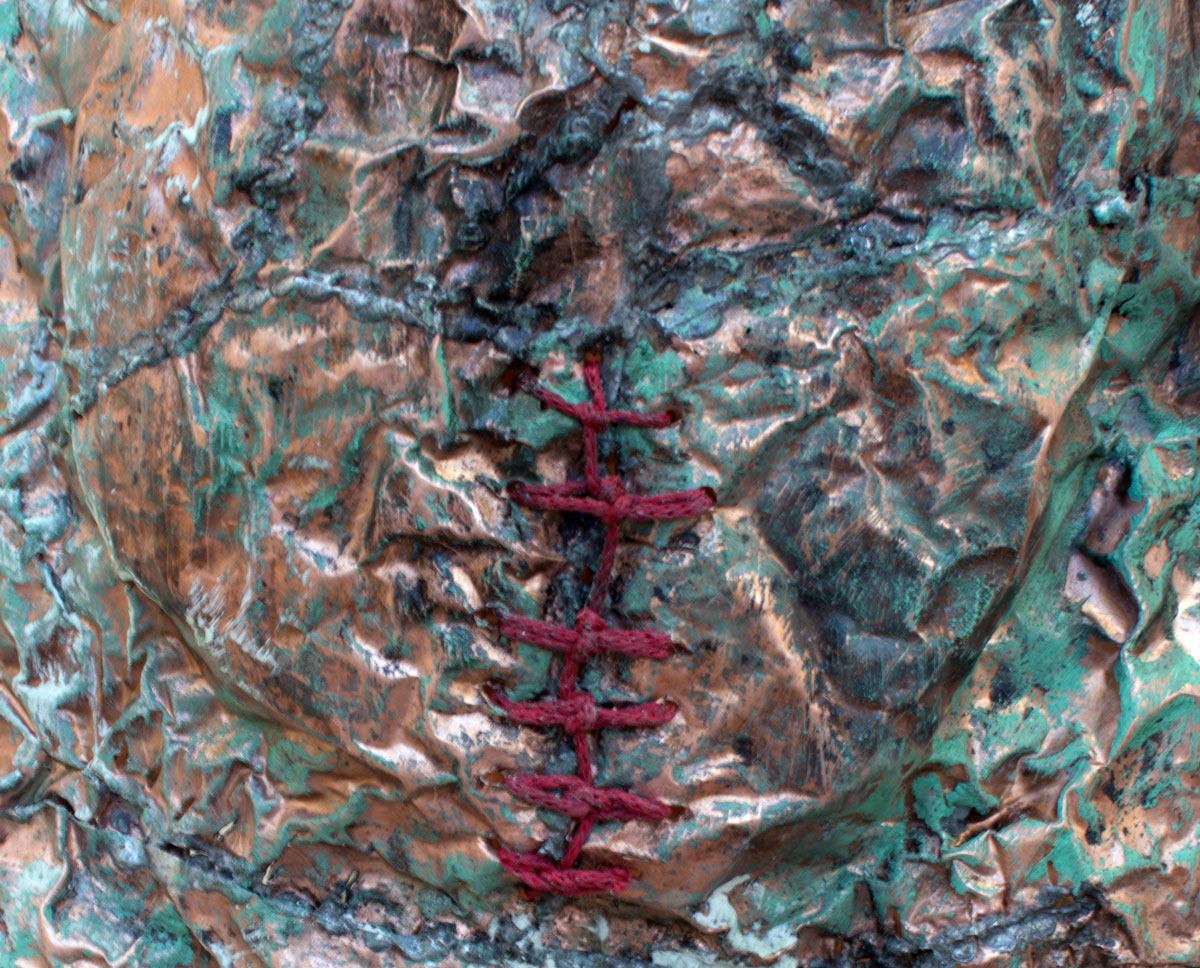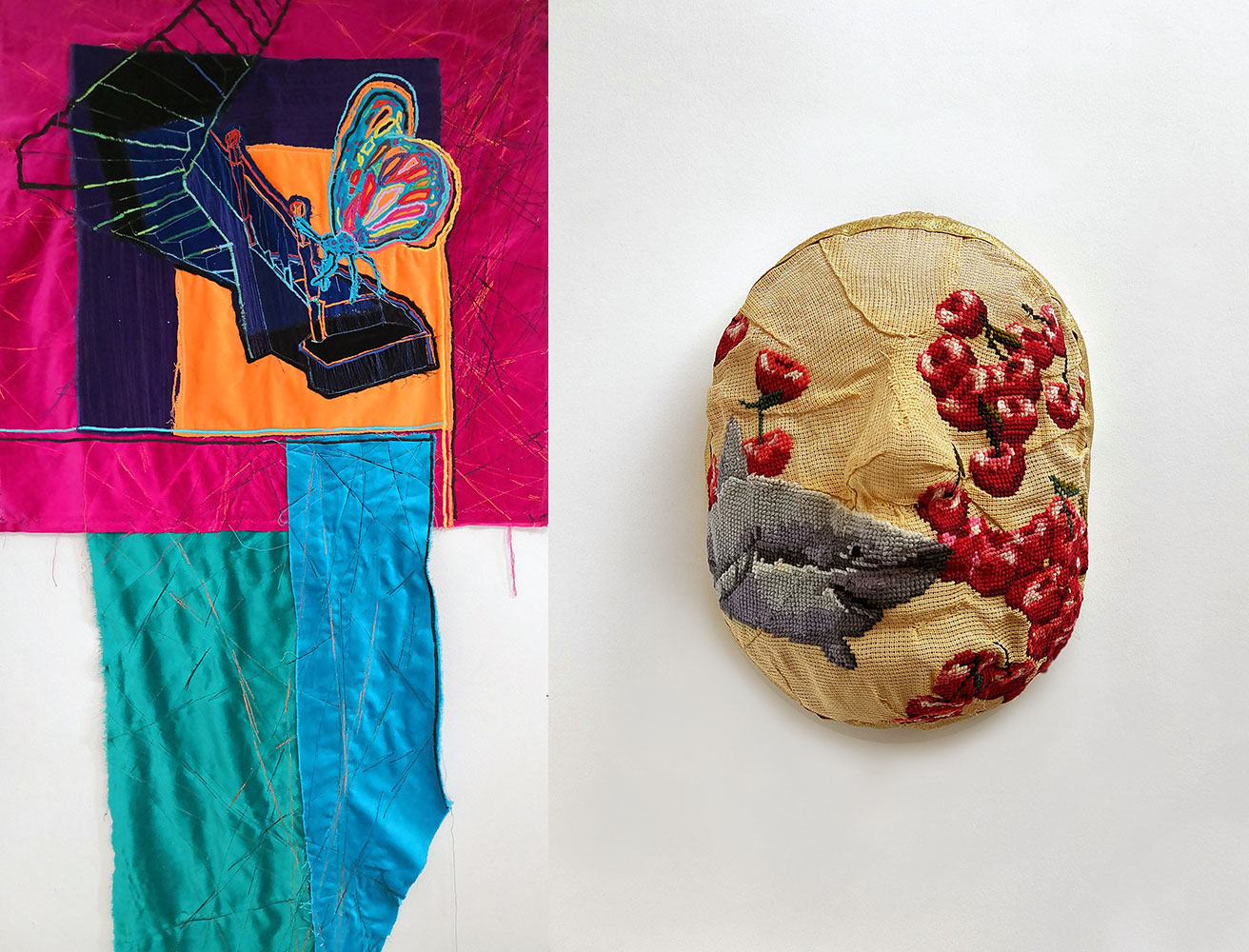PRESENTATION: Weaving the Future VI-Salamis, Part II
 The series of the exhibition “Weaving the Future” (2019-ongoing) is a project-work in progress that creates a dialogue between Greek visual artists, aiming to unite women from the past with the future, because the manual labor of our ancestors, through the gaze and means of women artists, becomes contemporary art, which touches and cauterizes issues of significant importance.
The series of the exhibition “Weaving the Future” (2019-ongoing) is a project-work in progress that creates a dialogue between Greek visual artists, aiming to unite women from the past with the future, because the manual labor of our ancestors, through the gaze and means of women artists, becomes contemporary art, which touches and cauterizes issues of significant importance.
Photo: dreamideamachine Archive
The series of the exhibitions “Weaving the Future” unites all women from the past to the future with invisible threads, since the manual labor of our ancestors, through the visual means of contemporary artists, is transformed into art that touches and deals whith the hottest topics of current affairs, from gender and domestic violence, to femicides and the destruction of nature. The exhibition “Weaving the Future VI-Salamis” takes place in Salamis Island, the curator’s place of origin, from where the thread of history, personal and collective, unfolds at the Folklore House of Salamis, with the participation of 22 female artists and several new works, aiming to create a fruitful dialogue with the space, the objects-relics and the tradition that is transferred and transmitted to the new generations with the contemporary visual narrative. Ianthi Aggelioglou in her loom created “Notebook” (2010), a psychograph – a mirror of the inner self. Memories from our “old house” are retrieved and recomposed by Ada Anastasea, uniting velvet in different by Ada Anastasea and contain within them, the secrets of each house. Irini Vazoukou renegotiates the body of “next door woman” by removing and stitching, important parts of the body from the chest to the caesarean section, joining pieces – experiences – in a journey and a fight for life… Using traditional napkins, embroidered with classic motifs in white, Grigoria Vryttia creates parallels between high and folk art, traditional and pop, reimagining an image that challenges the viewer to identify with it. Embroidering on the paper with black thread elements, ruins of a civilization that is anxious to be reborn from its ashes Penny Geka focuses on nature and its vulnerability, on the urgent need to save it and to save ourselves. Andromachi Giannopoulou embroiders a mask that hides erotic desire. She embroiders and laughs at the shark who comes to inspect if she has allowed the cherries to be seen. She laughs and makes fun of herself because she knows that the shark can be herself without wanting to, in a game of self-control, bully and victim. Influenced by dreams and the associations associated with them, Katerina Kokkinaki embroiders on the canvas a romantic figure that seems to emerge from the past, her childhood memories and dreams. Beloved person, who returns without logic, with a corrective mood. Katerina Kalitsounaki travels us through her own motionless sea, which changes, renews and differentiates itself in every place. Alive, diverse and inextricably linked to the ancient Greek culture, with a common root, like a weft of cultures. In “Rhea’s Veil”, Valia Karapidaki sews and attaches with red thread parts of tree branches to silk tulle, to create a “veil” that indicates the flow of feminine nature from the earth, the place that gave birth, its roots, flowering, fruition and emancipation. “Book of Dreams / Dream – Judge”, is the title of Sofia Kyriakou’s work, where she uses artificial and natural fragments, composing them in such a way that they refer to amulets. The artist considers that debris works like the dreams that accompany us. And as dreamers they foretell the future. Evdokia Kyrkou expresses the necessity to rewrite “stories” on the white handmade paper, interwoven with new developments combined with cultural tradition (use of thread). The thread is used as a kind of writing, which unfolds unhindered, which sometimes creates knots and sometimes unties them. ”Breath”, by Kyriaki Mavrogeorgi, is similar to the bibelots that decorated living rooms, where through the fragility of the material and the size, it reminds us of the importance of manual labor, through crochet as a meditative process and as breathing for the women who were trapped in social conventions. Lamprini Boviatsou, influenced by the mutation of the relationships, domestic and based violence, femicides, creates a meta-totem, a garden rake that from a gardening tool, turns into a tool of death since its teeth are picked up women’s hair, while adding bougainvillea flowers to exorcise the evil (!) “Ominous future” is the future of humanity and the earth, according to Vassiliki Mylona, who weaves with thread, plastic bags, rags, plastic waste from the beach, to raise awareness and underline that the most important woven fabric is the earth and it’s up to us to save her and save ourselves (!) Ismini Bonatsou combines lyrics from the song “Bang Bang II” with stereotypical phrases from girly fairy tales, creating a paper sculpture-lace in the space, which works on the border of two worlds: fairy tale and reality. It was created at the beginning of 2022, having gone through confinement conditions – where family relationships were revealed and love revealed its darkest face. Despoina Pantazi recalls associations, memories and processes of complex fear, following the inner path and revisiting visible and invisible places, discovering “new realities” expressed through repeated patterns. Mental journeys fueled by an introspective reality, anticipating purification and redemption. Artemis Potamianou, through her tapestry entitled “We will be victorious 2013”, makes a coarse comment about how stereotypes about ancient Greek history are translated into touristic souvenirs using pop culture. Margarita Petrova encloses lace, dolls, plastic flowers, but also sewing items, in her grandmother’s old drawers, which sometimes resemble independent stories, sometimes dollhouses and sometimes sewing machine drawers that contain all the materials that make up our world. Ifigenia Sdoukou embroiders a couple in love, that in seems to spring from the porcelain plates that adorned the houses in the past, but the young man is the Joker and all the emotions that can invade through the thoughts, expressions and finally his actions. Chrysa Skordaki locks up the most expensive objects of our desire in small boxes–hatcheries with golden threads and light, raising a series of questions of ambiguity of human relationships and how they have the possibility to evolve, transform or disguise themselves. Maria Stamati weaves a poem: “No message conveys its meaning if it is not received”, in an artwork that focuses on the importance of communication and how it is perceived depending on the side we stand on. With our differences and peculiarities, we the people need to be aware that this code is not simple, to concern about the ways of expression, through respect for diversity and inclusion. A few months before the outbreak of war in Ukraine, Eleftheria Stoikou worked on the book “War and Peace” by Leo Tolstoy, she removed pages, added red threads, retrieved memories from the collective unconscious, in an attempt to reweave history on the looms of memory, knowledge and awareness, but after this War, our society seems to be driven to despair (!)
Participating Artists: Ianthi Aggelioglou, Ada Anastasea, Irini Vazoukou, Grigoria Vryttia, Penny Geka, Andromachi Giannopoulou, Katerina Kokkinaki, Katerina Kalitsounaki, Valia Karapidaki, Sofia Kyriakou, Evdokia Kyrkou, Kyriaki Mavrogeorgi, Lamprini Boviatsou, Ismini Bonatsou, Vassiliki Mylona, Despoina Pantazi, Artemis Potamianou, Margarita Petrova, Ifigenia Sdoukou, Chrysa Skordaki, Maria Stamati, Eleftheria Stoikou
Media Sponsor: Art Views
Photo Left: Irini Vazoukou, Woman’s torso, Copper, Tin, Wax and Thread, 80 Χ 35 Χ 25 cm,, © & Courtesy the artist
Info: Curator: Efi Michalarou, Folklore House of Salamis, Polychroni Lembesi 32, Salamis, Greece, Duration: 4-18/8/2022, Days & Hours: Tue-Fri 19:00-21:00, Sat-Sun 11:00-13:00 & 19:00-21:00

Rjght: Maria Stamati, Communication, 2022, Mesh and yarn, 160 x 53 cm, © & Courtesy the artist


Right: Andromachi Gianopoulou, Nude, 2021, embroidery on canvas mask, 19 x 22.5 x 9 cm, © & Courtesy the artist


